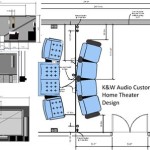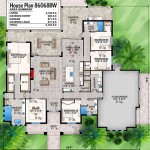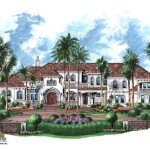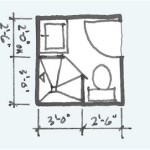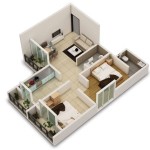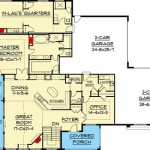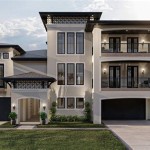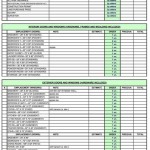House Plans For Multi-Generational Family Living
Multi-generational living, where multiple generations of a family reside under one roof, is experiencing a resurgence in popularity. This trend is driven by various factors including rising housing costs, the desire for closer family bonds, and the need for elderly care or childcare support. Consequently, the demand for house plans designed to accommodate multi-generational families is increasing. These plans must balance the need for shared living spaces with the desire for privacy and independence for each generation.
Effectively designed multi-generational homes go beyond simply adding extra bedrooms and bathrooms. They require careful consideration of the needs and lifestyle of each family member, addressing issues such as accessibility, noise reduction, and the creation of separate, yet integrated living areas. This article will explore the key considerations for designing house plans tailored for multi-generational family living.
Designing for Privacy and Independence
One of the most crucial aspects of designing a multi-generational home is the provision of privacy and independence for each generation. While the benefits of shared living are numerous, maintaining personal space is essential for the well-being of all occupants. This can be achieved through several architectural and design strategies.
Firstly, creating distinct living suites or "accessory dwelling units" (ADUs) within the home is a common approach. These suites typically include a bedroom, bathroom, and a small living area or kitchenette. They can be integrated into the main house or designed as a separate, self-contained unit with its own entrance. This provides a sense of autonomy and allows for independent living while still being connected to the family.
Secondly, strategic placement of bedrooms is paramount. Grouping bedrooms of similar generations together can minimize disturbances and create a more cohesive living environment for each group. For example, bedrooms for younger children could be located closer to the parents' suite, while bedrooms for grandparents could be placed in a quieter area of the house. Soundproofing walls and floors can also help reduce noise transmission between different areas of the home.
Thirdly, shared common areas, such as the kitchen, dining room, and living room, should be designed to accommodate the entire family comfortably. However, incorporating smaller, more intimate spaces, such as reading nooks or private patios, allows for individual relaxation and escape from the shared environment. The balance between communal and private spaces is key to successful multi-generational living.
Finally, consider separate entrances and exits. A dedicated entrance for an in-law suite, for instance, allows residents to come and go without disturbing others. This can be particularly important for maintaining a sense of independence and privacy.
Accessibility and Aging-in-Place Considerations
When designing for multi-generational families, accessibility and aging-in-place should be a primary focus, especially if elderly family members will be residing in the home. Incorporating universal design principles ensures that the home is comfortable and safe for people of all ages and abilities.
One of the most important considerations is barrier-free access. This includes features such as ramps instead of stairs, wide doorways and hallways to accommodate wheelchairs or walkers, and lever-handled door hardware for ease of use. Bathrooms should also be designed with accessibility in mind, including features such as grab bars, walk-in showers or roll-in showers, and comfort-height toilets.
Another key aspect is single-level living. If possible, designing the primary living areas, including the master bedroom and bathroom, on the ground floor can eliminate the need for stairs, which can be a significant obstacle for elderly or mobility-impaired individuals. If stairs are unavoidable, consider installing a stairlift or elevator.
Furthermore, consider the placement of essential appliances and fixtures. Ensure that countertops and sinks are at a comfortable height for all users, and that appliances such as the oven and microwave are easily accessible. Good lighting is also crucial for safety and comfort, especially in areas such as hallways and bathrooms.
Beyond the physical aspects of accessibility, consider the overall layout and flow of the home. Avoid cluttered spaces and ensure that there is ample room to maneuver. Clear pathways and uncluttered surfaces will minimize the risk of falls and injuries.
Flexibility and Adaptability
Multi-generational family dynamics can evolve over time. Children grow up, needs change, and circumstances shift. Therefore, house plans for multi-generational families should be designed with flexibility and adaptability in mind. This allows the home to accommodate changing needs and preferences over the long term.
One way to achieve flexibility is to incorporate multi-functional spaces. For example, a room that initially serves as a playroom for young children can later be converted into a home office or a guest room. Similarly, a large bonus room can be used as a recreation area or divided into two smaller bedrooms as the family grows.
Another approach is to design for future expansion. Consider leaving unfinished space in the attic or basement that can be finished later to accommodate additional living areas. This allows the home to grow as the family's needs change without requiring a major remodel.
Modular design principles can also enhance flexibility. This involves using standardized building components that can be easily reconfigured or added to the home. For example, modular wall panels can be used to create flexible room layouts that can be adjusted as needed.
In addition, think about the potential for converting existing spaces. A large living room could be divided to create an additional bedroom, or a formal dining room could be repurposed as a home office. The key is to anticipate future needs and design the home in a way that allows for easy adaptation.
Finally, consider the possibility of renting out a portion of the home in the future. Designing a separate entrance and a self-contained living suite can make it easier to rent out a portion of the home to generate income or provide housing for caregivers.
Ultimately, house plans for multi-generational families must be carefully planned to ensure the comfort, privacy, and well-being of all occupants. By considering factors such as privacy, accessibility, and flexibility, it becomes possible to create a home that adapts to the changing needs of a growing and evolving family unit.
Thoughtful architectural and interior design can foster a harmonious and supportive environment where multiple generations can thrive together. This investment in planning is then translated into a family home that effectively serves all of its residents.

How To Build The Perfect Multi Generational Home Plans Included Oberer Homes

Best Multigenerational Homes Four Generations One Roof House Plans New Next Gen

Multigenerational Floor Plans Are Perfect For Extended Households

Multi Generational Homes Finding A Home For The Whole Family

Best Multi Generational House Plans And Dual Living Floor

Multi Gen Homes D R Horton

Multi Generational Family Farm House Style Plan 8826

Multigenerational Home Design Is It Right For You

House Plan 4 Bedrooms 2 Bathrooms 3043 Drummond Plans

Multigenerational Living Is Back And That S A Good Thing

